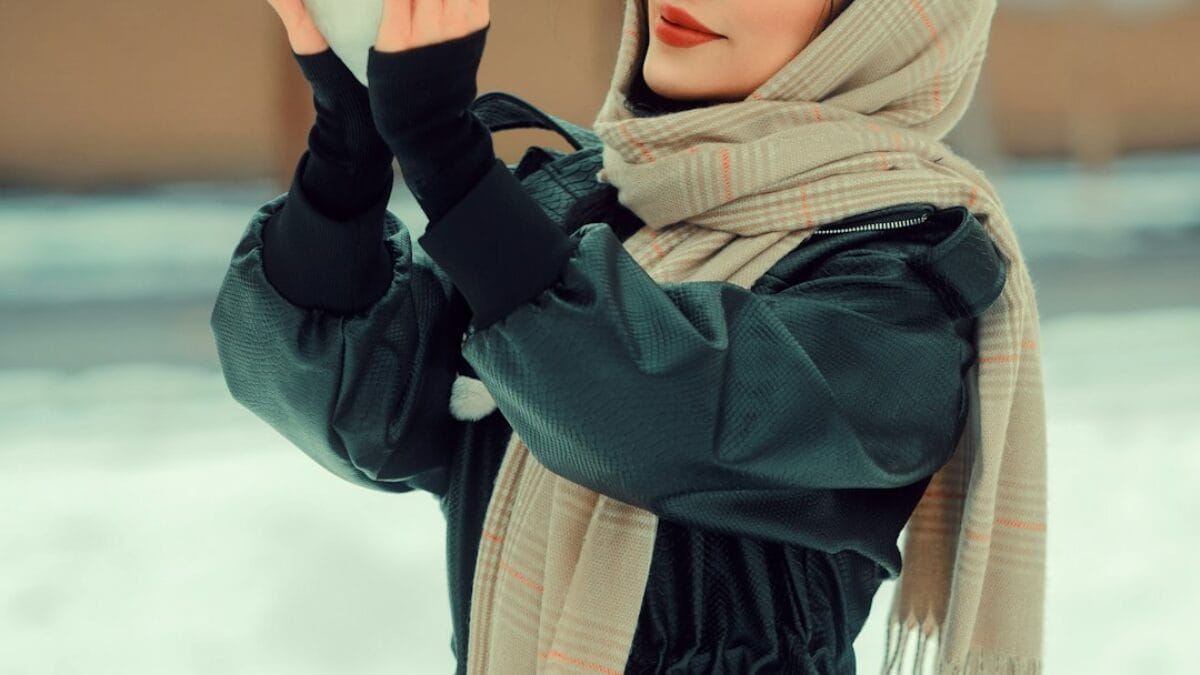When you picture a modern Muslim woman, what comes to mind? A woman in a flowing black abaya and sneakers? A stylish influencer rocking a pastel hijab with six-inch stilettos? Or perhaps a home-chef live-streaming her take on halal Korean street tacos? The reality is that all of these images—and many more—co-exist. Today’s Muslim women are redefining modesty, faith-based fashion, and culinary traditions while balancing career ambitions, digital entrepreneurship, and vibrant social lives. Hijab & High Heels is more than an eye-catching phrase; it is a metaphor for the seamless integration of faith, fashion, and food in the everyday lives of millions of women from Jakarta to Johannesburg, London to Los Angeles.
Understanding Hijab & High Heels Culture
The Evolution of Modest Fashion
Modest fashion has existed for centuries, yet the 21st-century modest-fashion movement is unprecedented in its visibility and economic power. Global Muslim consumer spending on clothing is forecast to reach $375 billion by 2025, according to the State of the Global Islamic Economy Report. This surge is driven by:
- Social media platforms where hijabi influencers showcase layering techniques, color blocking, and statement accessories.
- Luxury brands—from Dolce & Gabbana to Oscar de la Renta—launching ramadan-ready collections.
- Fast-fashion giants such as H&M and Zara introducing hijab-friendly lines.
The result is a democratized fashion arena where a corporate lawyer can pair her tailored blazer with a silk turban-style hijab, and a street-style blogger can mix sporty sneakers with an abaya belted at the waist.
Faith as the Anchor
Despite outward stylistic diversity, faith remains non-negotiable. The Qur’anic injunction to “draw their veils over their chests” (24:31) is interpreted in culturally nuanced ways. A woman in Kuala Lumpur may choose a loose chiffon tudung, while her counterpart in Riyadh opts for a niqab. What unites them is the conscious decision to center modesty in their wardrobes—whether they are wearing high heels, combat boots, or orthopedic flats. Faith also influences ethical shopping: many consumers prioritize brands that offer fair wages, transparent supply chains, and breathable fabrics compliant with Islamic principles of cleanliness (tayyib).
Digital Sisterhood & Representation
The hashtag #HijabDay has over 100 million views on TikTok. Instagram accounts like @hautehijab and @withloveleena curate styling tutorials, prayer-time fashion hacks, and honest conversations about imposter syndrome in the workplace. These digital spaces allow Muslim women to reclaim the narrative, moving away from stereotypical portrayals toward nuanced self-definition.
Key Components of Modern Muslim Women’s Lifestyle
Fashion: From Abayas to Athleisure
1. The Capsule Modest Wardrobe
A practical approach embraced by many modern Muslim women is the capsule modest wardrobe. The formula is simple:
- Base layers: Long-sleeve tees, bodysuits, and lightweight turtlenecks in neutral tones.
- Middle layers: Slip dresses, duster cardigans, and tailored vests for volume without bulk.
- Outer layers: Maxi coats, kimono abayas, and trench capes that swish elegantly over high heels.
- Head layers: Jersey hijabs for errands, satin wraps for evening events, and sports hijabs for the gym.
- Shoes: Block-heel pumps for 12-hour workdays, embellished mules for weddings, and minimalist sneakers for travel.
2. Color Psychology & Fabric Science
Choosing the right fabric and palette can influence mood and confidence levels. For example:
- Cool pastels (lavender, sage, powder blue) are popular in spring/summer Ramadan collections because they feel fresh under the sun and photograph well for iftar gatherings.
- Performance knits with moisture-wicking properties help active women maintain modesty while running marathons or chasing toddlers.
- Crisp poplin resists wrinkles during long flights, making it ideal for the digital nomad hijabi.
Faith Practices Infused in Daily Routine
Morning Mindfulness & Fajr Fashion
Many women integrate dhikr (remembrance) and wudhu-friendly fabrics into their morning routine. A quick checklist might look like:
- 5:00 a.m.—Wake up for Fajr prayer wearing a bamboo-fiber nightgown that absorbs moisture.
- 5:30 a.m.—Light stretching in an oversized hoodie from a Muslim-owned modest activewear brand.
- 6:00 a.m.—Swap into a crease-resistant maxi shirt dress and satin hijab for the commute.
Halal Nutritional Philosophy
Food is never just fuel; it is an act of worship. The modern Muslim woman often juggles:
- Tayyib sourcing: Grass-fed meats, organic produce, and fair-trade spices.
- Meal-prep Sundays: Batch-cooking quinoa-stuffed bell peppers and freezer-friendly samosa rolls.
- Hydration hacks: Rose-water chia pudding for suhoor to maintain electrolyte balance during Ramadan.
Food: Halal Gastronomy Goes Global
Pantry Staples 2025
| Traditional Item | Modern Upgrade | Usage Tips |
|---|---|---|
| Ghee | Grass-fed cultured ghee in glass jars | Use for high-heat searing of halal Korean bulgogi. |
| Basmati rice | Organic brown basmati | Ideal for buddha bowls with turmeric tahini dressing. |
| Sumac | Sicilian sumac in sprinkle bottles | Rim cocktail glasses for virgin mojitos at ladies’ brunches. |
| Medjool dates | Pitted, stuffed with orange-blossom marzipan | Energy-boosting snack during long conference days. |
Recipe Spotlight: Saffron-Infused Overnight Oats
Ingredients:
- 1 cup gluten-free rolled oats
- 1½ cups oat milk
- Pinch of saffron threads soaked in 2 tbsp warm water
- 1 tbsp date syrup
- ½ tsp cardamom powder
- Chopped pistachios & dried rose petals for garnish
Method:
- In a mason jar, combine oats, oat milk, saffron water, date syrup, and cardamom.
- Refrigerate overnight (minimum 6 hours).
- Top with pistachios and rose petals before serving. Enjoy as a post-Fajr power breakfast.
Benefits and Importance
Psychological Empowerment
Blending hijab & high heels fosters a sense of authentic confidence. Research by the Institute for Social Policy and Understanding shows that visibly Muslim women who consciously curate their style report 32 % higher levels of self-esteem compared to those who feel pressured to adopt mainstream norms.
Economic Opportunities
- Modest-fashion start-ups: Women-led businesses such as Haute Hijab and Vela Scarves have secured multi-million-dollar investments.
- Content creation: YouTube channels monetize hijab tutorials, halal meal-prep videos, and modest styling lookbooks.
- Tech & e-commerce: Muslim women coders develop AI-powered hijab-fit apps that use augmented reality to drape virtual scarves over user selfies.
Community Building & Social Impact
Ramadan pop-up markets, hijabi hiking clubs, and iftar yoga sessions are reshaping social bonds. These gatherings normalize multifaceted identities—showing that spirituality, style, and sweat equity can coexist.
Practical Applications
Workplace Modesty Hacks
Capsule Office Looks
| Occasion | Core Piece | Styling Tip | Shoe Pairing |
|---|---|---|---|
| Client pitch | Navy crepe wrap-dress with built-in hijab | Add metallic obi belt for structure | Nude patent block heels (2.5″) |
| Team lunch | Linen-blend palazzo jumpsuit | Layer sleeveless turtleneck underneath | Leather mules with gold buckle |
| After-work networking | Blazer abaya in charcoal | Swap silk hijab for sequin turban | Strappy stilettos in emerald |
Travel Essentials for the Modest Jet-Setter
- Convertible cardigan: Doubles as a prayer shawl and airplane blanket.
- Portable steamer: Revives crushed chiffon hijabs in hotel rooms.
- Collapsible muslin prayer mat: Fits into a laptop sleeve.
- SPF 50 setting spray: Protects hijab hairline during desert excursions.
Event Styling: From Nikah to Networking Gala
For a nikah ceremony, a bride may choose a pearl-encrusted tulle veil paired with custom satin stilettos embroidered with Qur’anic calligraphy. For a networking gala, the same woman might re-style her veil into a chic turban knot, swap into glittering loafers, and add a statement waist chain over her jumpsuit. The cost-per-wear mindset ensures pieces transition from sacred to social effortlessly.
Frequently Asked Questions
What is the difference between hijab, niqab, and burka?
Hijab generally refers to any head covering that conceals the hair and neck while leaving the face visible. Niqab covers the face except for the eyes, often worn with a separate eye-veil or goggles. Burka is a one-piece veil that covers the entire face and body, with a mesh screen for eyes. Choice depends on personal conviction, cultural norms, and safety considerations.
Can high heels be considered modest?
Yes, if worn intentionally and comfortably. Modesty is not solely about coverage; it encompasses behavior, intention, and context. A sturdy block heel for a boardroom presentation can project confidence without compromising values. The key is to avoid styles that sexual


Post Comment